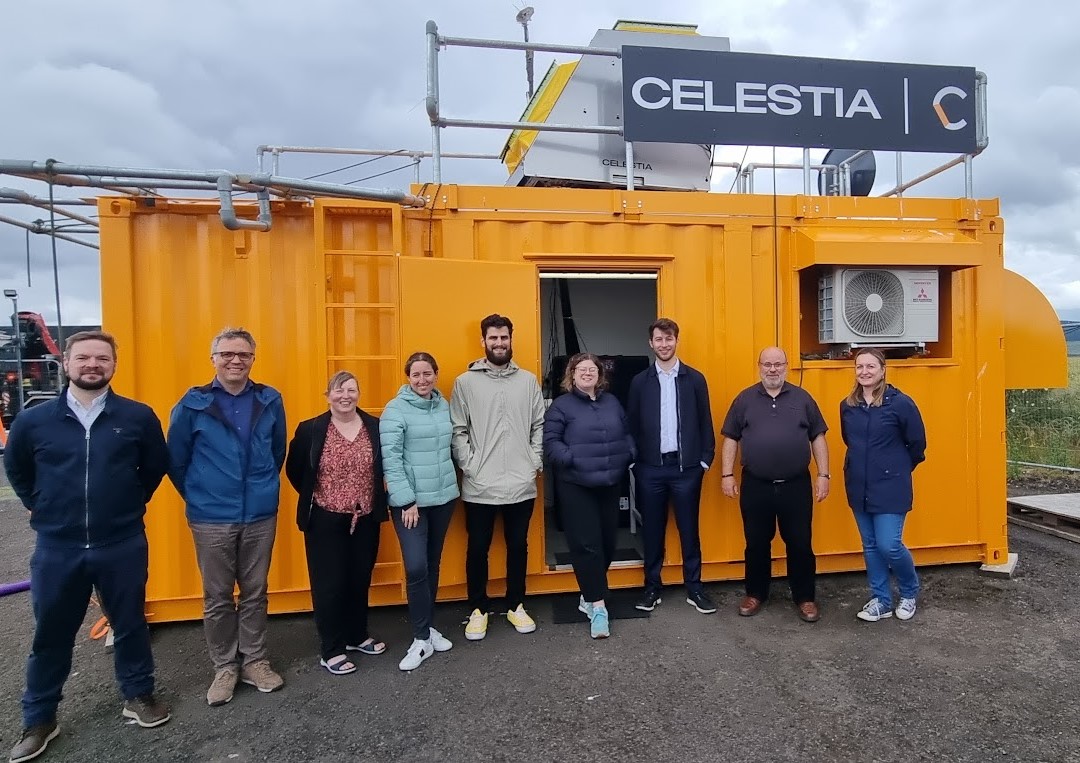Celestia UK's eScan tech tracks JoeySat

Above: The Celestia UK, ESA and Eutelsat OneWeb teams at Dundee Satellite Station.
Courtesy Celestia UK
The Proto-1 Gateway developed by Celestia UK used innovative beam steering capability to track and process the signals sent from JoeySat satellite when pointing to the Gateway for a number of passes over Dundee Satellite Station.
The successful operation, which was witnessed by ESA and Eutelsat OneWeb, showed that the signal-to-noise ratio was maintained without drops allowing reception and demodulation of the modulated signals.
Signal integrity was maintained, as the satellite signal was tracked from one phased array to another during JoeySat trajectory, and smooth phased array handover was demonstrated with no loss of modem lock nor degradation of the signal.
The successful test marks the last stage of the prototyping phase and the start of the pre-production project which will deliver a multi-beam phased array gateway for satcom gateway / teleport applications that will be the first of its kind in the world.
This powerful and agile new technology will solve the challenges faced by the increasing number of satellites to be tracked in the rapidly growing LEO constellation environment. It represents a new generation of gateway ground terminal with no moving parts for increased reliability and downtime, minimal footprint requirements and the ability to be connected to multiple multiorbit satellites providing full 2.5 GHz instantaneous bandwidth in Ka-band, simultaneous Left Hand and Right Hand polarisations with high EIRP and G/T.
Celestia UK’s CEO Dr Malachy Devlin said: “In successfully tracking, continuously receiving and processing a downlink signal from Eutelsat OneWeb’s Low Earth Orbit satellite JoeySat, we have demonstrated that our cutting-edge eScan technology is not only fully operational but that it is with exceptional performance.
“We have proven the technology’s ability to track and process the signals sent from the satellite with no loss of signal integrity and demonstrated seamless phased array handover, proving its potential as a powerful and reliable solution to meet the escalating demands of the LEO constellation environment.”
Laurent Jaffart, Director of ESA’s Connectivity and Secure Communications said: “ESA is proud to have supported, through Sunrise Partnership Project, the development of the innovative eScan technology with Celestia UK and Eutelsat OneWeb. This technology presents a more cost-efficient alternative in tracking antennas of low orbit satellites compared to traditional mechanical methods, and shows how our ARTES programmes work with innovative companies like Celestia and promote a more competitive European space industry.”
"We're thrilled with the results of the successful test with Celestia UK on our Demonstration Satellite JoeySat," said Lucio Caporicci, Head of Programs at Eutelsat Group. “This collaboration within the Sunrise Partnership Project has highlighted the huge potential for groundbreaking technologies developments, that we are proud to support".
Celestia UK has already started working on the next phase of the technology development which includes transmit testing to JoeySat, followed by additional bi-directional testing at increasing satellite altitudes, before moving into the production phase.












